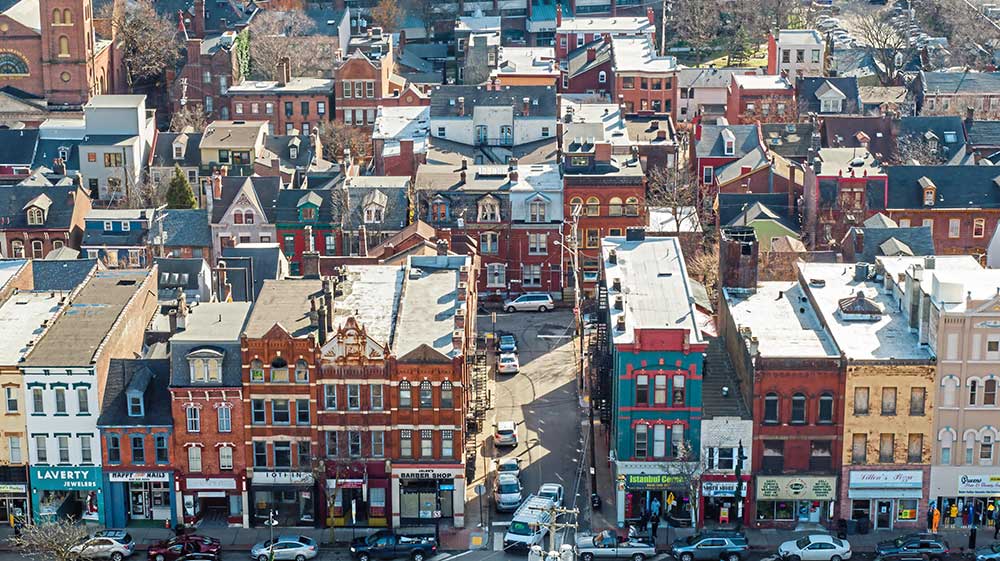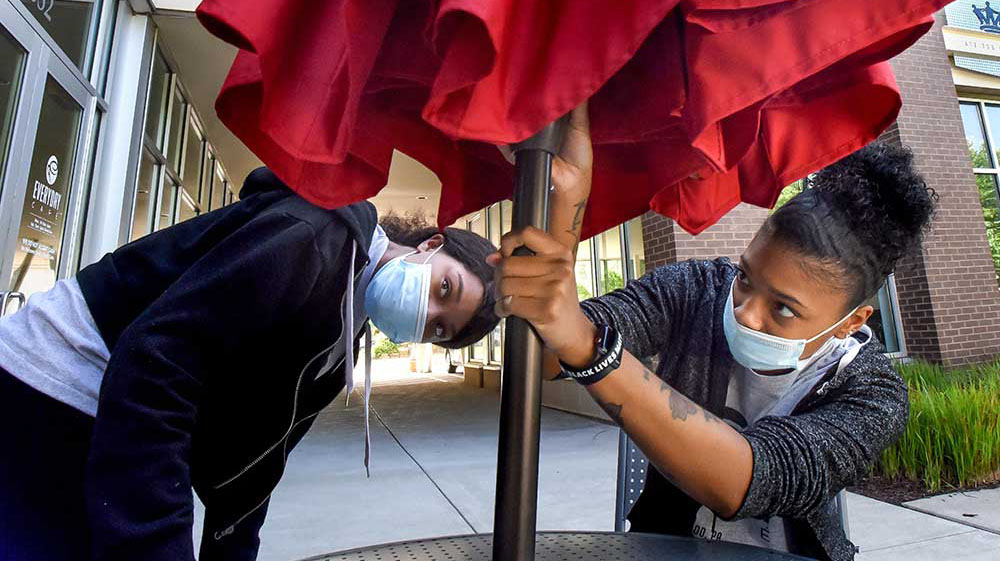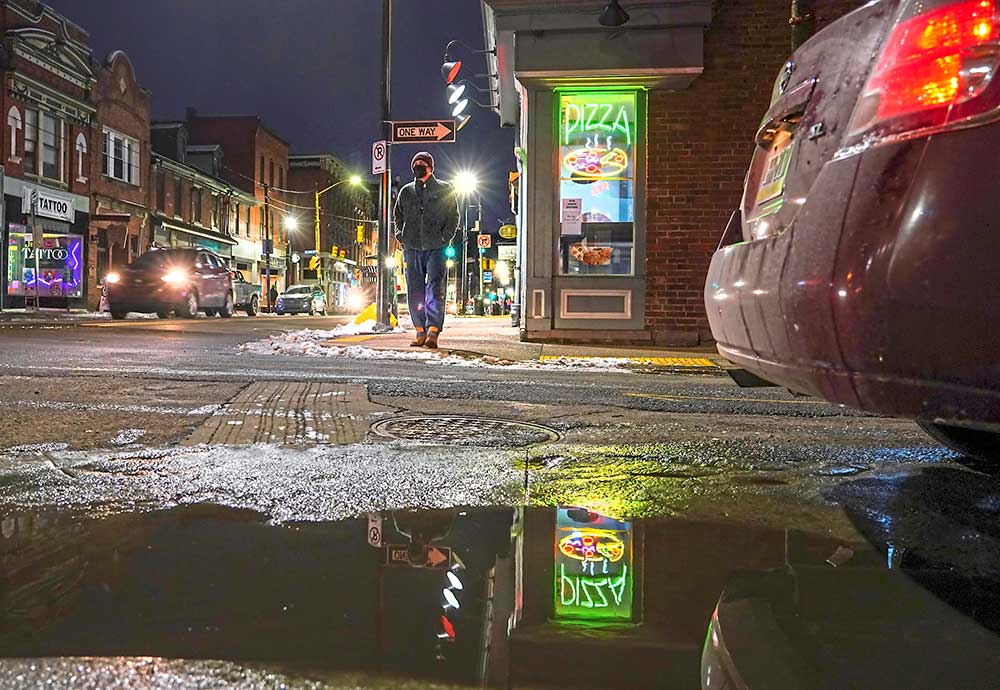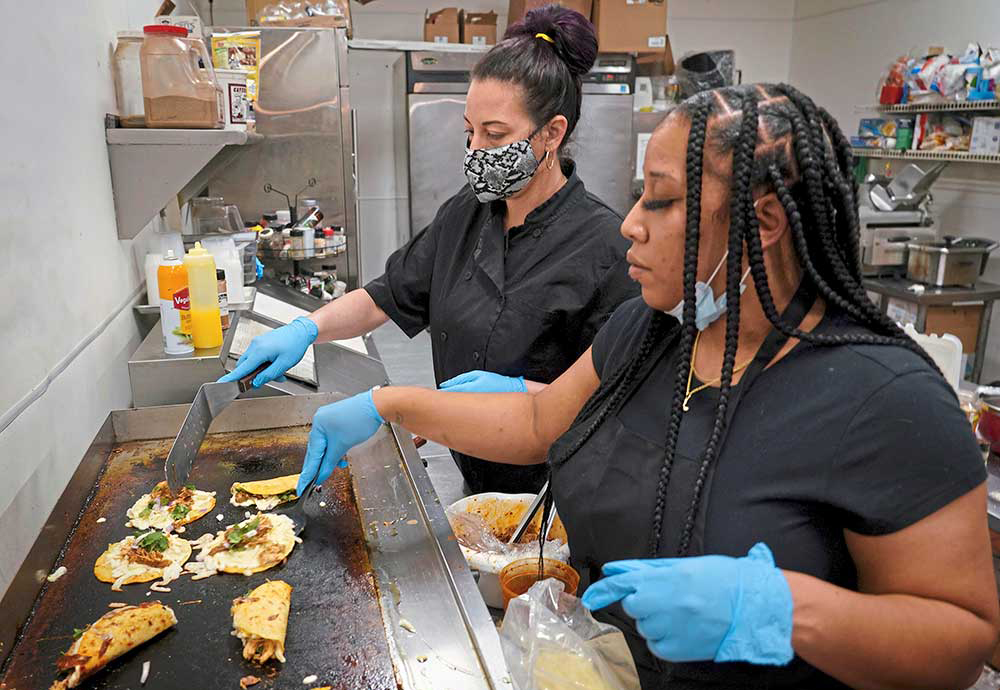

LOADING
Even before COVID-19 came to Pittsburgh, Allison Harnden tracked the impending tsunami through a WhatsApp group of “night mayors,” her peers across the world whose job is to help their cities’ social economies.
“We could see the wave of what was coming,” she said. And it was terrifying.
Ms. Harnden, Pittsburgh’s nighttime economy manager, knew that there would be shutdowns here as there were in Asia and Europe, and that many office workers would be nursing their laptops on their actual laps at home, likely for months.


The businesses that couldn’t go remote would suffer greatly, she knew.
Even more fundamentally, Ms. Harnden worried that the social fabric of Pittsburgh neighborhoods and the idiosyncratic business districts that anchor them might unravel or rearrange itself into something less familiar.
The first few months of the pandemic had little time for such reflection. Ms. Harnden and officials at neighborhood chambers of commerce became webinar warriors — trying to help businesses navigate offers of state and federal aid like the Paycheck Protection Program that brought more than $3 billion in low-interest, forgivable loans to companies in southwestern Pennsylvania.
But while a lifeline for some, the pandemic has long ago outlasted the cash.
Allegheny County unemployment stood at 6.7% in December while about 41,000 jobs had vanished from the metropolitan area’s hard-hit hospitality sector in 2020.
There’s been no breathing room, no “new normal” to get used to as operating guidelines and coronavirus infection rates swung wildly over the past year.
These are the stories of the businesses that make up some of Pittsburgh’s most recognizable blocks. As they wrestle with how to survive during the pandemic, they are also pieces of a puzzle. They will determine how the South Side looks without crowds of college students thronging to its bars; how an up and coming Garfield art district deals with yet another setback in its plan to emerge from the scaffolding; how Homewood’s dedicated businesses and nonprofits juggle the weight of a pandemic that has treated the area’s Black residents more brutally; and what happens when the music stops at East Ohio’s hugely popular Deutschtown music festival.


When Ms. Harnden surveyed several hundred establishments about COVID-19’s toll last spring, what stood out to her was the emotional struggle.
Do I save my business or support my employees, they wondered. Do I stick to what I do best or retool for a new and temporary normal?
“Just as we all respond personally to struggle in different ways, that’s how business owners are,” Ms. Harnden said.
“Some say, ‘I own my building, I will shut down and ride out the storm. One business owner said, ‘It’s really frightening, but it’s kind of exciting. I haven’t felt this creative since I opened my business.’”
While the pandemic is still raging, Ms. Harnden’s WhatsApp group is starting to think about what sociable cities like Pittsburgh will look like after the pressure eases. If many people continue working from home in the future, they think neighborhoods will become even more important. Instead of work taking people away from their home turf, it might make them more invested in their surroundings.
“I think something that’s come of it is businesses are really listening to consumers,” she said.
Joyce Gannon
Anya Litvak
Kris B. Mamula
Lauren Rosenblatt
Andrew Rush
Steve Mellon
Pam Panchak
Andrew Rush
Alexandra Wimley
Chance Brinkman-Sull
Laura Malt Schneiderman
Advertisement
Advertisement